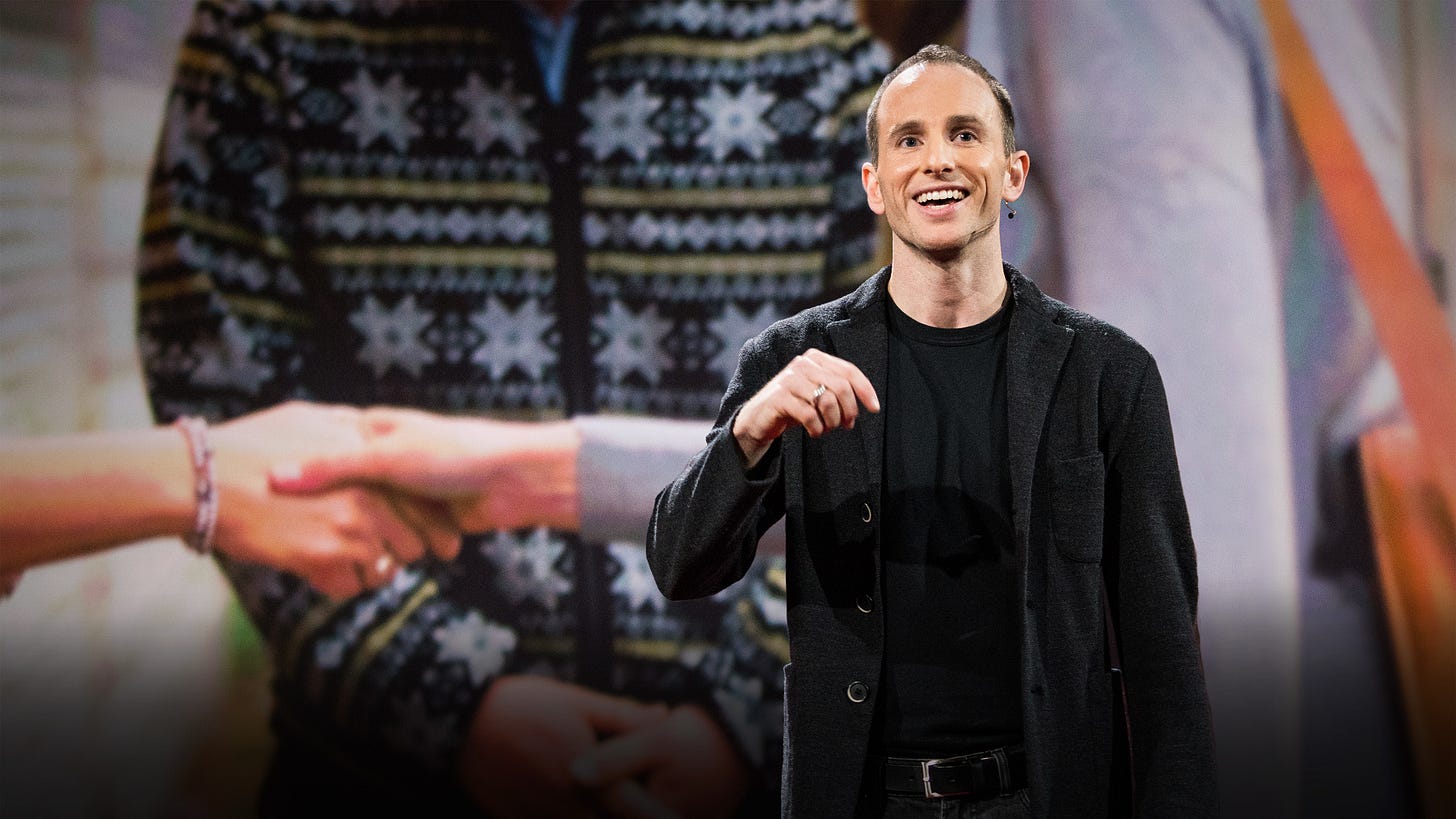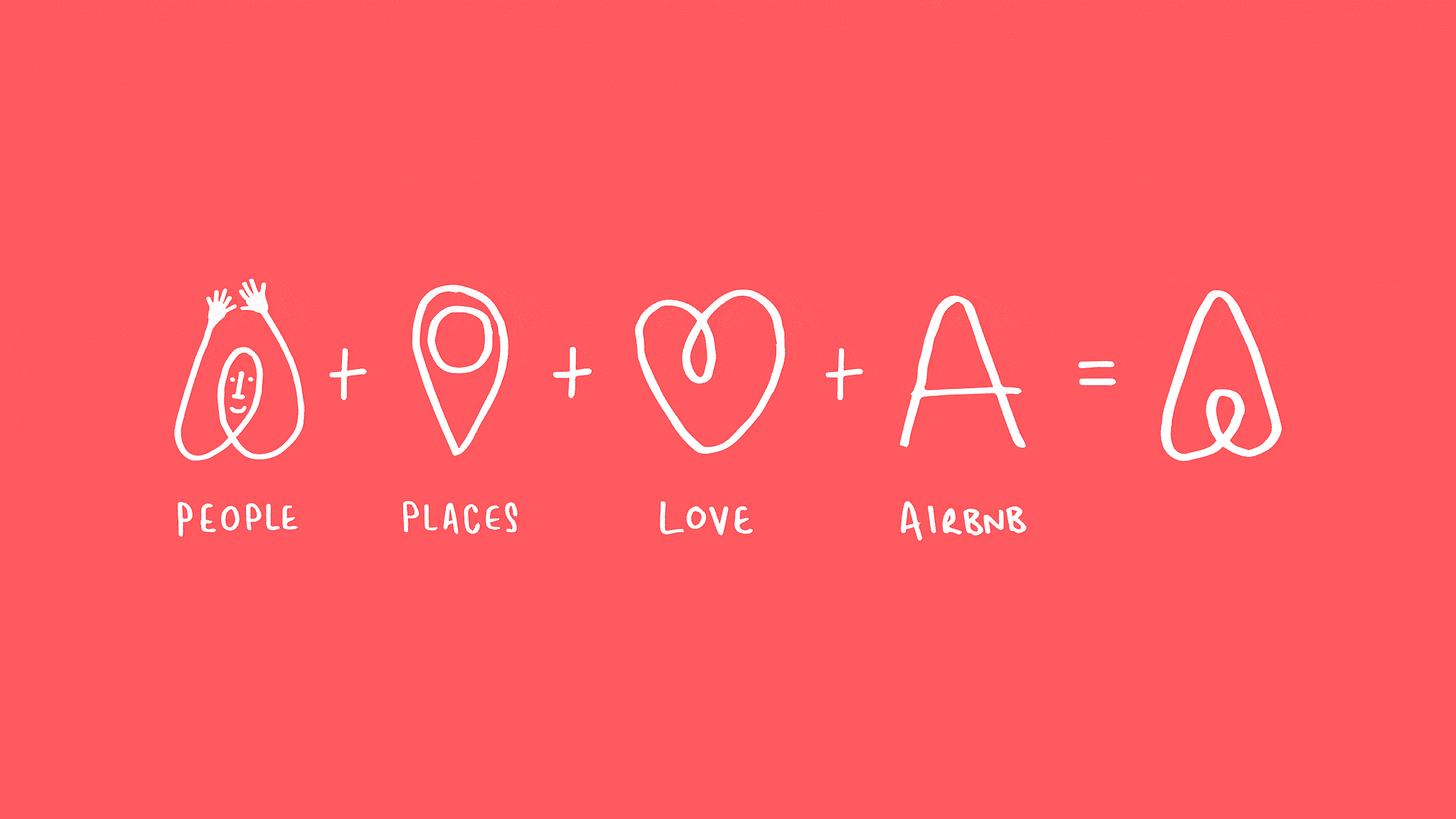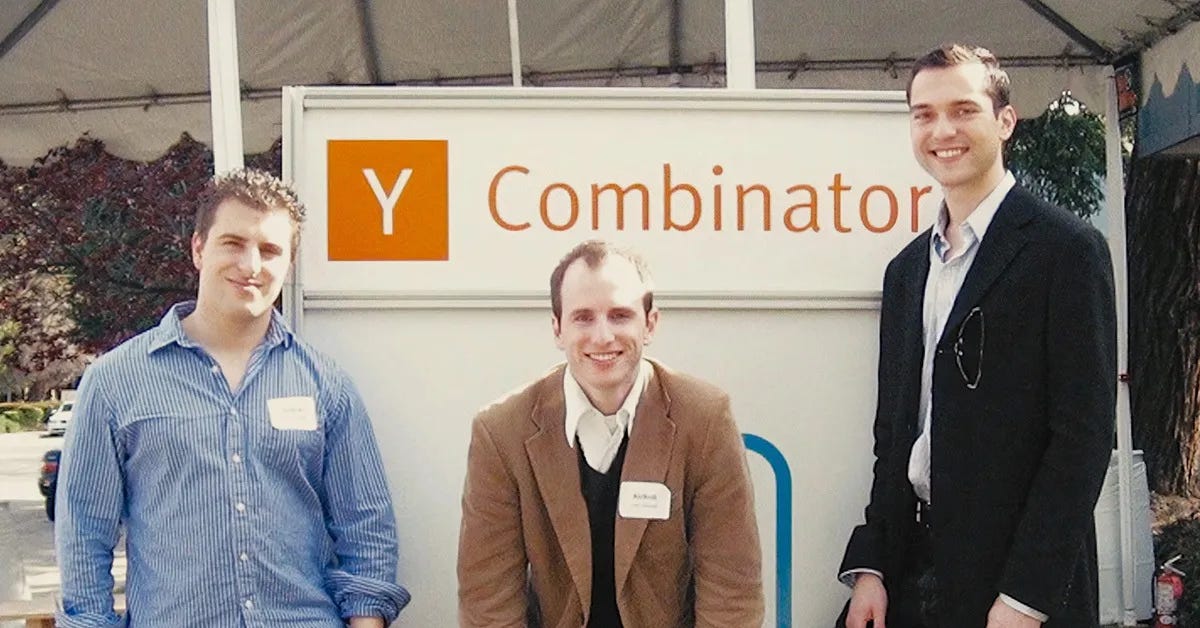Airbnb, a Creativity-led Design Company
What Airbnb is
Airbnb is a human-centered business that aims to connect people across the world. Technically they operate as a two-sided travel marketplace, where hosts offer guests stays and experiences on their platform.
In recent years, after the pandemic, their core idea has become connecting people and building a community that allows you to belong anywhere in the world. A creativity-led company that imagines new possibilities for people and is also responsible to its stakeholders.
Do things that don’t scale
Airbnb is an alumni from Y Combinator, one of the best accelerators for startups. Paul Graham, great essayist and founder of Y Combinator, wrote one of his most iconic essays entitled “Do things that don’t scale.” Apparently, an unusual and counterintuitive advice but it is what startups need in their early days to make something people want. In their case it meant going where their users were, in New York, to help them take better photos for their homes.
When the Airbnb founders got in front of their users, they carefully listened to them and improved the website based on their needs. One of the hosts proposed to have a calendar, so they built it and sent an email back to him. The reactions were super positive. The commitment and human touch given to the early users produced a compound effect that helped them achieve product market fit.
Listen to your users
2 of the 3 Airbnb founders have a design background, and this led them to build their startup around users. They listen to them and solve their problems. Hosts are the foundation on which the Airbnb experience is built, and guests are members of the community. They believe that if you want to create a great experience for guests, you have to give great tools to hosts.
If Airbnb connects people, hosts are the facilitators of that connection, and even as the company evolves, moving beyond the stay and experiences, hosting will be at the core of Airbnb.
This was not only the case in the early days, because the company is always listening to the hosts. They are involved in the design process, co-designing the experience and coming up with new feature ideas to solve their daily needs.
Today, the Airbnb team is constantly observing, evaluating, and understanding human behavior around the world, framing their insights to creatively solve their users' problems.
Building trust at scale
Airbnb is often described as "the worst idea that ever worked." This is because at first their idea of sleeping in strangers' homes seemed crazy to investors and even to Paul Graham who brought them into Y Combinator. Their website was launched in October 2007, some months after the first iPhone and one year before the App Store, that would start the so-called app economy, giving rise to many startups such as Airbnb.
“The sharing economy is commerce with the promise of human connection”
- Joe Gebbia, co-founder of Airbnb
One of the main factors that has contributed to their success is trust. Building trust that goes beyond a transaction between two strangers is not easy. The sharing economy did not yet exist, and Airbnb helped build it. This article illustrates how the company's product designers play the role of the mutual friend who invites you to the party. They are tasked with sharing information and making introductions before entering new places and experiences.
Trust is the element on which Airbnb can build deep, cross-cultural connections around the world. It takes an effort to be transparent to the host and for the host to make a series of small gestures that make guests feel appreciated and welcome.

A creative-led company
The creative spirit is part of the company's culture and has guided it to become what it is today. Using creativity to push boundaries and find unconventional solutions has been essential in overcoming the company's crises.
Creativity also helped when they had to stop Airbnb Experiences in person because of social distance. Within two weeks, their team transformed the product into Online Experiences, creating a new kind of interactive experiences that connect people from all over the world.
When Airbnb co-founders Joe and Brian were studying at the Rhode Island School of Design, their colleagues were thinking about how designers could have a seat at the table. They went further, asking themselves, "What would a designer-led company look like?" The result can be seen today by looking at the way they run the company, making sure that creatives play an important role.
Design DNA
From the beginning, design has been at the heart of everything the company does. A company with a design-driven approach views decisions as design problems. It is said that design is more than a department; it is a way of looking at the world. Airbnb, like any other design company, offers products and services to solve problems and change the world in a positive way.
"Design is fundamentally about making decisions through the lens of what will be useful and engaging for people."
- Alex Schleifer, former Chief Design Officer at Airbnb
Anything can be designed, even a company. Design can cover many aspects besides products and services, in the case of a company, including organizational structure, processes, decisions, and how it is perceived from the outside.
Designing for stakeholders
An important part of the company is the stakeholders, which are individuals or groups who have an interest in an organization. For Airbnb, they are so important that they are at the center of designing their company and all the decisions they make. They are so important that they even have a section devoted to them in the SEC Form S-1 that they filled out to go public.
Airbnb's stakeholders are 5: employees, shareholders, hosts, guests, and the community in which they live. Airbnb intends to make long-term decisions that take their interests into account because their collective success makes the company thrive.
In 2018, they unveiled a set of principles to express its responsibility to the stakeholders it serves. Just a couple of years later, with the arrival of the pandemic, there was an opportunity to put them to the test. During the crisis, the company refunded reservations to its hosts, causing problems for hosts who relied on the service to pay their rent or mortgage. So they reimbursed the hosts as well, and to protect shareholders' investments, reduced expenses and raised $2 billion in debt. Similarly, when they had to lay off 2,000 employees (nearly 25% of the company) they made sure they could keep their benefits and helped them find better opportunities.
Storytelling Matters
Stories are always important when presenting products, actually they are the only thing that matters because in the end people don't buy numbers or features. They end up buying the vision if the story resonates with them and the product solves their problem.
I recently wrote on my website that great design starts with words and that great experience design is about telling the story of the outcome achieved through your product or service.
Brian Chesky, founder and CEO of Airbnb, is a big fan of Walt Disney and while reading his biography he discovered a technique used by Disney animators to create Snow White, the first feature-length animated film. It involved storyboarding and illustrating the story step by step to understand the narrative of the film.
In order to inform a story-oriented design process, they wanted to tell the story of a perfect journey. They distributed flyers in San Francisco and found Ricardo, an introvert traveler. They decided to map out the perfect experience for Airbnb and took him around San Francisco for many activities. At the end of the weekend, he said he had the best trip of his life and started crying. This single incredible customer experience is the basis of what Airbnb does with stories today.

The Airbnb Blueprint
“Designers should not be focused on services.
They should be focused on user flows”.- Brian Chesky
I shared a similar view to Brian's when I recently wrote about how experiences are the future of apps and how it will change the role of designers. "It will be more about flows and less about buttons, a holistic approach to reimagining how people act in the world."
Ten years after the first storyboard, in 2023, they decided to map the end-to-end experience of hosts and guests. They initially put on a wall all the screens a user sees, about 150. Then they did the same with the policies users see every time they interface with customer service. About 70 screens, some of them 700 pages each. Then they mapped out every single operational touchpoint and called it "wrapping your arms around the company." They analyzed 20 million customer service calls, hundreds of thousands of social media posts, tons of workshops, and even their direct experience with Airbnb.
This allowed them to create a priority map to try to systematically fix their product.
Crisis as a development tool
According to former Intel CEO Andy Grove, great companies are those that improve after a crisis, and Airbnb is one of them. Crises are defining moments that often decide a company's fate, and Airbnb has been shaped by such moments.
The most important crisis the company faced was the pandemic crisis. The company had to go public in early 2020, and only after 8 weeks it had lost 80% of its business and was on the verge of bankruptcy. The headlines read, "Is this the end of Airbnb?"
At the time, Brian Chesky did what Steve Jobs did when he returned to Apple in 1997. He eliminated most initiatives (transportation, travel content, a hotel offering, a luxury service) to keep the essential parts of the company. There was also a future desire to build an airline and that to open a creative studio to make movies. They had to come to terms with reality and downsize. The pandemic forced them to simplify and say, "If we have to do one or two things, what are they and how can we all work together?" They reduced the size of the company and ongoing projects to move faster, like a startup. The result was a positive cash flow of about 4 billion just 3 years after the crisis.
It was also a time to empower the team, which until then had delegated its decisions into the hands of the users, without taking responsibility for its own choices. Thus it was made sure that A/B tests were used only when the designers had first made assumptions.
Crafting a strong creative culture
The hallmark of Airbnb is its culture. It is what attracts people to work in their company and is therefore also part of their success.
Creating a culture when there are only a few of you is easy; you just need to get the message out to everyone. When the organization grows and expands rapidly, it becomes difficult to maintain its values as a company and pass on the values to newcomers.
The reason culture is so important is that it becomes a kind of first principle to think about when making decisions. It is a north star that keeps the company's values and people aligned. It is also one of the reasons why customers choose one company over another.
According to Airbnb's founders, culture does not make people, but people determine culture. That is why they preferred to focus on hiring the right people or, as they would say, "building a team so talented that you are uncomfortable working with them."
Another key element of their culture is being a cereal grain entrepreneur. They expect their employees to be bold and resourceful. Just as they were in the early days of the company, when they were still called AirbedandBreakfast.com and had maxed out all their credit cards to finance the company. Then, during the 2008 presidential election, they used their skills to design 1,000 cereal boxes customized with the candidates in the election. Their Obama O's and Cap'n McCain cereals sold for $40 a box, enabling them to raise $30,000 to survive until they joined Y Combinator.
The secret sauce of Airbnb
There is no definitive answer to what has allowed Airbnb to survive all these crises and become one of the most iconic companies of our time.
Certainly one of the reasons has been their relentlessness despite all the adversity that has come their way. They started from an idea that no one believed in, many investors did not even believe that designers could lead a company. However, they did not stop and, on the contrary, found original solutions that went beyond the initial constraints. Along the way, they always cared about stakeholders, listened to customers, and made ways to solve their problems. They understood that everything can be designed and improved. That is why they started from culture to design an entire company. They have also been shaped by crises and realized what they really are: a creativity-driven design company that wants to connect people.
For those who are curious
Brian Chesky conversation with Dylan Field at Figma Config 2023
Don’t Fuck Up the Culture by Brian Chesky
How Airbnb designs for trust - TED Talk by Joe Gebbia
How Snow White helped Airbnb prove that storytelling is the most important skill in design









